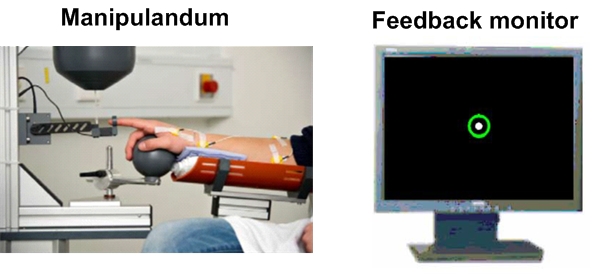Sensory Neuron Stimulation [SNS] is an expression, term, developed to describe the endogenous method of effectuating reflexes used by TREMOREX. Although not referred to as such, a limited number of other therapies employ SNS, and it has been observed in the laboratory.
Balance – create an imbalance to stimulate vestibular sensory neurons
Balance exercises and devices like balance boards stimulate vestibular sensory neurons by causing frequent disturbances in balance. The sensory neurons evoke reflex arcs that contract muscles to restore balance.
Caloric Vestibular Stimulation
A recent double-blinded, placebo-controlled study concluded “The results provide evidence that repeated CVS can provide safe and enduring adjuvant relief for motor and non-motor symptoms associated with PD”.
CVS involves the insertion of pulsating warm air or water in one ear and cold air or water into the other. The stimulus is reversed periodically. Changes in temperature modulate the rate of vestibular afferent firing rate.
Vaccines – stimulate pathogen sensory neurons
And cause the body’s immune system to recognize and destroy the pathogen and any of the microorganisms associated with it that it may encounter in the future. But for the vaccine stimulation, the immune system might never have been activated and would probably remain dormant; atrophied, and unable to perform when needed.
Sensory Stimulation Therapy [SST]
SST is an experimental therapy that utilizes high-speed repetitive stimulation of the five senses to restore memory and cognitive functionality. For example, stimulation of the sense of sight by repeatedly flashing a loved one’s photograph can evoke downstream neuroplasticity and the recovery of atrophied neurons.
Trenado
In 2014 Trenado and colleagues published a scientific paper on the successful use of a special type of vibratory stimulation to suppress tremor. The study was performed on a group of 8 individuals with enhanced physiological tremor who were asked to perform simple visuomotor task: modulate the amount of force generated by the index finger in response to a visual target presented on a computer monitor and small force perturbations applied to the finger.

“By far the coolest finding in the study was that all subjects reported a reduction in tremor amplitude that far outlasted the application of the vibration. Specifically, one subject reported after-effects that lasted 15h, two subjects reported benefits that lasted 8h and the other six subjects reported after-effects that lasted between 3-6h”.
Trenado clearly observed sensory neuron stimulation in the laboratory.
From: The Brain That Changes Itself
“She is wearing a construction hat with holes in the side and a device inside it called an accelerometer. Licking a thin plastic strip with small electrodes on it, she places it on her tongue. The accelerometer in the hat sends signals to the strip, and both are attached to a nearby computer. She laughs at the way she looks in the hat, “because if I don’t laugh I will cry.” This machine is one of Bach-y-Rita’s bizarre-looking prototypes. It will replace her vestibular apparatus and send balance signals to her brain from her tongue. The hat may reverse Cheryl’s current nightmare”.
It did.
“Over the next year Cheryl wore the device more frequently to get relief and build up her residual effect. Her residual effect progressed to multiple hours, to days, and then to four months. Now she does not use the device at all and no longer considers herself a Wobbler”.
These are examples of sensory neuron stimulation by endogenous methods
TREMOREX is an application of SNS